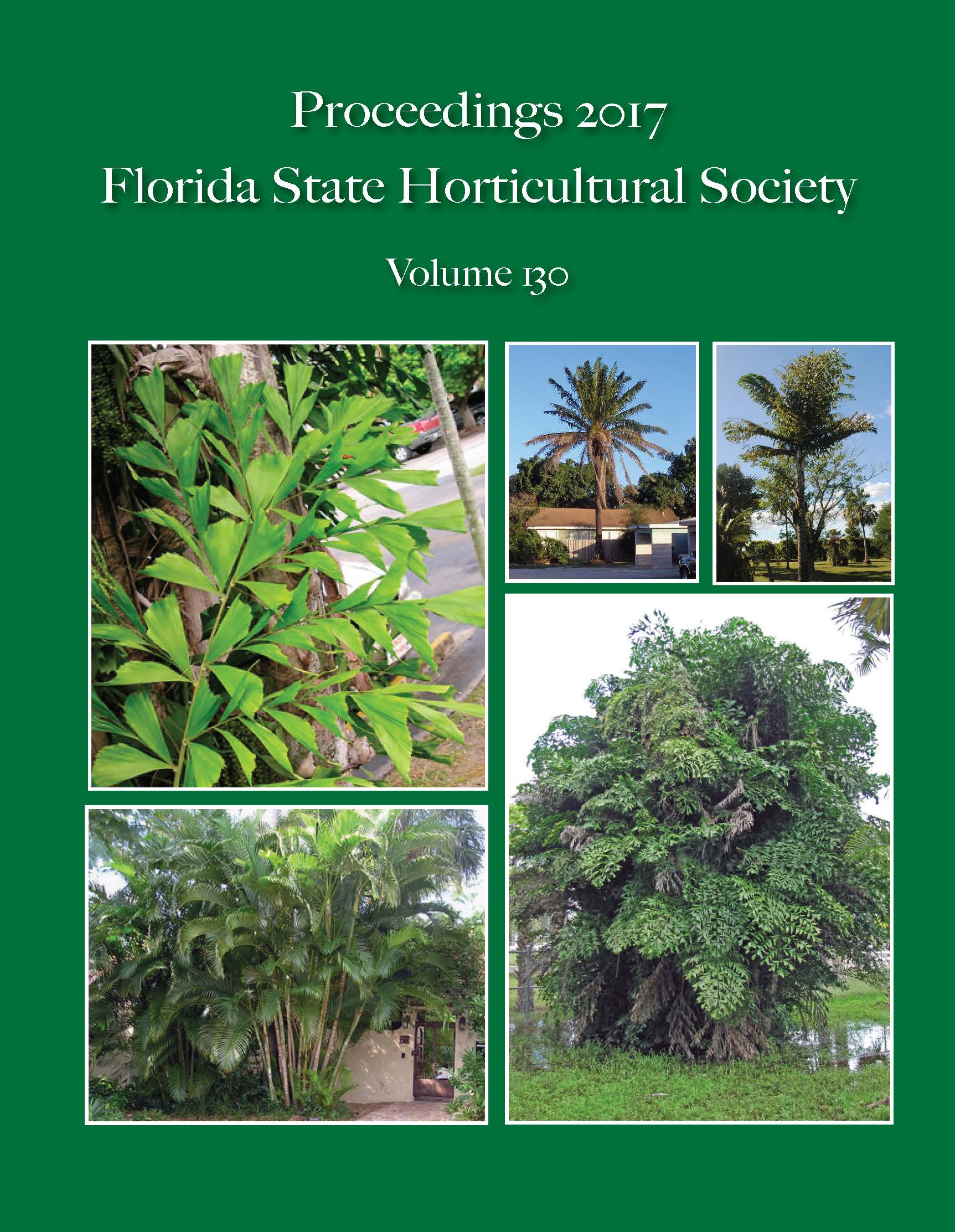Response of Young Citrus to Varied Nitrogen, Soil Amendment, Irrigation Rates and Citrus Greening: Preliminary Results
Abstract
Citrus production in Florida has declined largely due to citrus greening [also known as huanglongbing (HLB)]. A study was established under greenhouse conditions in October 2016 to evaluate the response of one-year-old HLB-affected orange trees to nitrogen fertilization and irrigation rates. A total of 72 trees were healthy and 72 were HLB-positive by graft-inoculation of the Candidatus Liberibacter asiaticus (CLas) causal pathogen. Nitrogen fertilization rates included University of Florida Institute of Food and Agricultural Sciences (IFAS) recommended rate, and 75% and 125% of IFAS recommended rates. Irrigation rates were applied at 75% and 100% evapotranspiration (ET). In addition, the soil used in the pots had either no amendment (control), biochar, or compost. Measurements collected include stem water potential, nutrient (NH4-N, NO3-N, P, K, Ca, Mg, B, Mn, and Zn) and soil water content, soil pH and electrical conductivity, root density, trunk diameter, canopy volume, volumes of water applied, and weather data. This paper documents the results from the preliminary work in central Florida and outlines next steps for managing nutrition and irrigation needs of HLB affected young trees.

